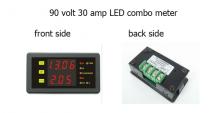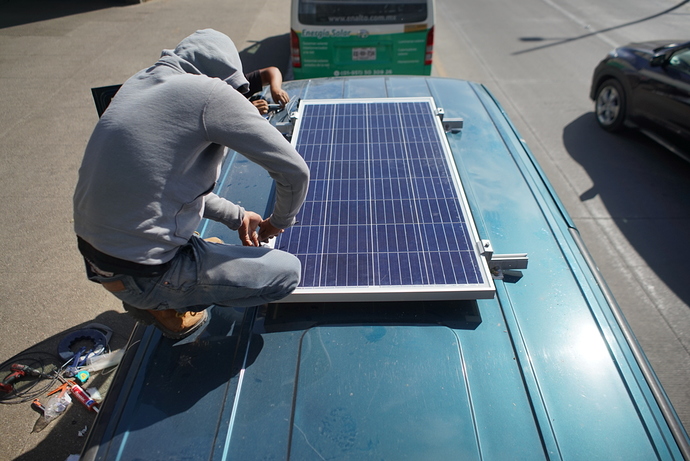Greetings!
How much driving are you planning on doing? When it comes to solar, most places are less than ideal, and the PNW is even worse. Solar is the most expensive, least reliable, and least efficient way to charge batteries. For desert dwellers maybe it’s acceptable, but for most people it’s really just a waste of money.
99% of the people who claim to like solar ( a tiny fraction of the number of people who have wasted a fortune on it ) are also using other charging methods too, and crediting their solar when it isn’t their solar keeping them in power.
A perfect example was a guy I ran into who was bragging about his solar, and how it cut down his generator usage from 24 hours a day to only 10 hours a day. But he had also added a battery bank with the solar, and was charging through a converter instead of thorough a legitimate battery charger. We disconnected his solar, added a battery charger, and cut his generator run time down to an hour a day unless he needed to run his air conditioning. His roof full of solar wasn’t capable of charging his battery bank on the longest sunniest summer day, let alone the rest of the year.
I dumped solar altogether. I don’t drive much, but I drive enough to keep my house battery charged better than solar ever did, then I have a backup generator if I ever need it. The most disposable part of any power system is always the solar. I tried solar multiple times, and every time was a failure. My whole power system, battery, generator, battery charger, and isolator cost under $200. 5 gallons of gas for my generator will last me over a year on the rare occasions I use it.
If I were you, I wouldn’t even mess with solar until after I already had a reliably working system without it. My house battery, isolator, and full installation was under $75 at a battery recycling shop. I added another $20ish worth of accessories to that to create my very convenient system. Under $100 gave me a totally reliable power system for 99% of the time. A $99 no name cheap generator covers that other 1% if I’m boondocking for a long time. I don’t even need the generator more than half a dozen times a year. I could get away without it, and just run my engine instead if I wanted to. I could add solar if I wanted it, but I don’t need it, so for under $200, I have a totally reliable power system that doesn’t rely on the weather. Truth be told, even with solar, I would still need both my isolator and my generator to have a good reliable system. I didn’t lose anything but headaches by skipping solar this time around.
It isn’t about the money, it’s about the reliability of always having plenty of power. The fact that my current system cost less than solar was just an added bonus. If my current system cost would have cost twice as much as solar, I would have still paid it, and been happy. I’m comfortable and worry free, no sunshine for a week or more, no problem, I still have reliable power.
Cheers!




